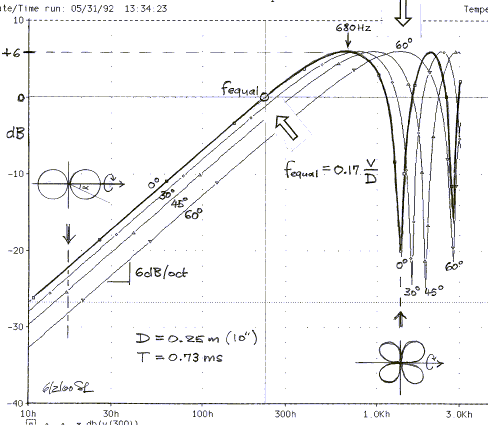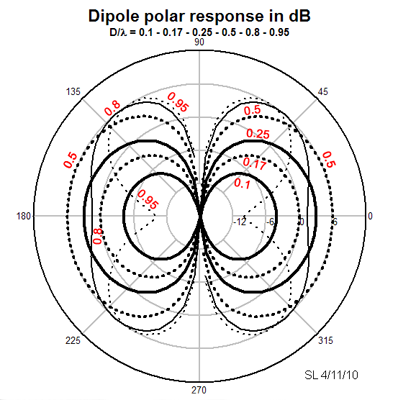It is much more complex than that...
https://www.linkwitzlab.com/models.htm#AIf D = 14"
There is a frequency where the dipole is equal to a monopole... F =0.17*v/D = 163 hz
There is a frequency where the dipole has double the output to the monopole... f = 0.5*v/D = 80 hz
There is a null to the sides when they are evenly spaced = 0 output...
And there is a predicted resonance you want to stay out of range for the h-frame... F = 0.25*v/L =482 hz
Moving the driver/baffle forwards and backwards changes the shape because it changes where the backwave meets the front wave causing these doubling and cancellations... and different wavelengths relative to the total output...
So by shifting this up or back you would change the shape (see polar plots below, and how different freq have different shapes) of the response... not necessarily a bad thing...


But there is a shelving filter to offset the output dropoff 6db/octave [-assuming Brian of Rythmik designed that using the 14" original design]
If you want to boost the output on the low end... then use 24 inches D depth gives you...
There is a frequency where the dipole is equal to a monopole... F =0.17*v/D = 95 hz
There is a frequency where the dipole has double the output to the monopole... f = 0.5*v/D = 46 hz
There is a null to the sides when they are evenly spaced = 0 output...
And there is a predicted resonance you want to stay out of range for the h-frame... 281hz
etc...
But the shelving filter wont match this design... so you have to re-equalize it or soemthing....
Actually just noticed linkwitz did show some math for how the response changes when it is moved forward... [note he points to the center of the driver for this]
https://www.linkwitzlab.com/frontiers.htm#LThere is a change more toward cardiod as you shift/asymmetry in the D length...
the nulls shift etc as well... I consider significant differences. Different doesnt mean bad. If it sounds good it sounds good. Just trying to keep the H frame shape here, personally.
-Tony